#African American women in ballet
Explore tagged Tumblr posts
Text
Today for Women History Month we honor the birthdays of two women in the arts, Janet Collins and Amanda Gorman
Janet Collins (March 7, 1917 – May 28, 2003) was an African American ballet dancer, choreographer, and teacher. She performed on Broadway, in films, and appeared frequently on television.[1] She was among the pioneers of black ballet dancing, one of the few classically trained Black dancers of her generation.
Janet Faye[2] Collins was born in New Orleans, and at the age of four moved with her family to Los Angeles, California, where Collins received her first dance training at a Catholic community center. She studied primarily with Carmelita Maracci, Lester Horton, and Adolph Bolm, who were among the few ballet teachers who accepted black students. She also had fond memories of studying with Los Angeles dance teacher Dorothy Lyndall.
Amanda S. C. Gorman[1] (born March 7, 1998)[2] is an American poet and activist. Her work focuses on issues of oppression, feminism, race, and marginalization, as well as the African diaspora. Gorman was the first person to be named National Youth Poet Laureate. She published the poetry book The One for Whom Food Is Not Enough in 2015. In 2021, she delivered her poem "The Hill We Climb" at the inauguration of U.S. President Joe Biden.
Her inauguration poem generated international acclaim, and shortly thereafter, two of her books achieved best-seller status, and she obtained a professional management contract. In February 2021, Gorman was highlighted in Time magazine's 100 Next list under the category of "Phenoms", with a profile written by Lin-Manuel Miranda.[3] That same month, Gorman became the first poet to perform at the Super Bowl, when she delivered her poem "Chorus of the Captains" at Super Bowl LV.
Born in Los Angeles, California,[5][6] Gorman was raised by her single mother, Joan Wicks, a 6th-grade English teacher in Watts,[7] with her two siblings.[5][8] Her twin sister, Gabrielle, is an activist[9] and filmmaker.[10]Gorman has said she grew up in an environment with limited television access.[11] She has described her young self as a "weird child" who enjoyed reading and writing and was encouraged by her mother.[5]
Gorman has an auditory processing disorder and is hypersensitive to sound.[5] She also had a speech impediment during childhood.[12][13]Gorman participated in speech therapy during her childhood and Elida Kocharian of The Harvard Crimson wrote in 2018, "Gorman doesn't view her speech impediment as a crutch—rather, she sees it as a gift and a strength."[14] Gorman told The Harvard Gazette in 2018, "I always saw it as a strength because since I was experiencing these obstacles in terms of my auditory and vocal skills, I became really good at reading and writing. I realized that at a young age when I was reciting the Marianne Deborah Williamson quote that 'Our deepest fear is not that we are inadequate, our deepest fear is that we are powerful beyond measure' to my mom."[1] In 2021, Gorman told CBS This Morning co-host Anthony Mason that she used songs as a form of speech therapy, and explained, "My favorite thing to practice was the song 'Aaron Burr, Sir,' from Hamilton because it is jam-packed with R's. And I said, 'if I can keep up with Leslie in this track, then I am on my way to being able to say this R in a poem."
#Women’s History Month#Janey Collins#March 7#women in the arts#African American women in ballet#Amanda Gorman#African American women poets#The Hill We Climb#Best selling books by women#Call Us What We Carry
12 notes
·
View notes
Text









happy black history month. Here are some beautiful black women <3 🤎🖤
#anticoquette#coquette#black women#WOC#woc coquette#black history month#black woman beauty#black queens#taylor russell#ballet#ballerina#black history#history#African American#black American#African#west indian#near and far
5 notes
·
View notes
Text

Anne Raven Wilkinson (Feb 2, 1935 – Dec 17, 2018) was an American dancer who is credited with having been the first African-American woman to dance for a major classical ballet company. Wilkinson broke the color barrier in 1955 when she signed a contract to dance full-time with the Ballet Russe de Monte Carlo. She was promoted to soloist during her second season with the troupe, and remained with the company for six years. Wilkinson later became a mentor to American Ballet Theatre principal dancer Misty Copeland. Via Wikipedia
#the first African-American woman to dance for a major classical ballet company#art by women#art#dance#dance herstory#ballet#Anne Raven Wilkinson#Raven Wilkinson
4 notes
·
View notes
Text
Stephanie Dabney
Stephanie Dabney was born in 1958 in Philadelphia, Pennsylvania. Dabney joined the Dance Theater of Harlem at the age of 16. She would become a principal dancer at the company and an international star who inspired young Black dancers. Dabney built an impressive repertoire with the Dance Theater of Harlem, and became known for her dramatic characterizations as well as her flexibility, technique, and elegance. In 1982, she gave her breakout performance as the title character in a reinterpretation of Stravinsky's "The Firebird". Dabney went on to perform this role around the world. In 1990, she was diagnosed with HIV, but continued to perform with the Dance Theater of Harlem until 1994.
Stephanie Dabney died in 2022 at the age of 64.
8 notes
·
View notes
Text

Black Ballet Dancer Sitting With Sunflowers and Pumpkins
Zazzle
#melanin#ballet#ballet dancer#black femininity#black girl beauty#pretty black woman#black female artist#soft black women#digital art#ballerina#dancer#sunflowers#autumn#black ballerina#african american women#black artists on tumblr#beautiful black women#jigsaw puzzle#oil painting
1 note
·
View note
Text
A Brief History on Majorette Dancing in Black Culture
The term "majorette" comes from the Dutch word "Dansmarietjes" meaning "Dance Marys" referring to young women that are performing a carnival dance; it originated in Germany's Rhineland.
Eventually the dance made it's way down to the American South. Majorette dancing picked up in the 1960s in African American culture. At the Orange Blossom Classic in Miami, FL of 1968, The Golden Girls (GGs) of Alcorn State University (HBCU in Mississippi) gave the first known majorette performance. The ensemble consisted of eight girls and left a lasting impression.

Majorette dance teams, along with their bands played a significant role in HBCU culture after that. They are known for their acrobatic, jazz, ballet, hip-hop, burlesque, bucking, cabaret styles of dance. The groups appearance are always on point, dazzling outfits, laid hairstyles, entertainment props.... Synchronization, team spirit and confidence are the key points to performing.

Fast forward to today, this art form has picked up in mainstream media significantly; thanks to Lifetime's TV show Bring It!, Beychella and TikTok trends. Hard work and dedication goes into these performances, it's not just about entertainment for the audiences, but culture, sisterhood, community and legacy.

Source
#black tumblr#black women#black art#black fashion#black hair#theafroamericaine#black history#black culture#classic#nostalgia#majorette#cheerleader#cheer life#hbcu#black americans#black people#black excellence#hbcupride#dance#dancers#black girl thoughts#black girl magic#black girl aesthetic#black girls of tumblr#black girl moodboard#black girl beauty
57 notes
·
View notes
Text

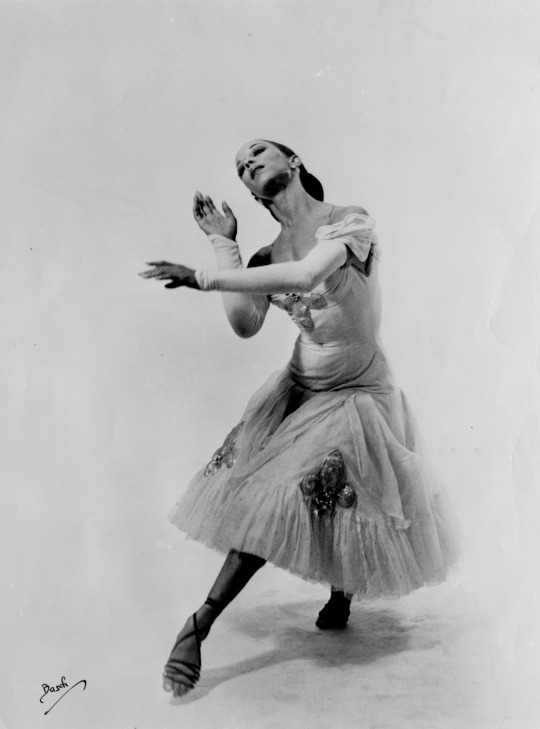
Today In History
Janet Collins broke color barriers in the 1950s when she became the first African American prima ballerina and one of the very few prominent black women in American classical ballet.
Collins was born in New Orleans, LA, on this date March 7, 1917, and today we are honored to share a glimpse into the life of a crucial figure in ballet history.
Ms. Collins made her debut as the leading dancer in the Met’s production of “Aïda.” She went on to become the first African American prima ballerina with the Metropolitan Opera. Ms. Collins was also a member of SAB’s guest faculty, teaching modern dance classes at the School from 1949-1950 and then again from 1967-1969.
“Everything was clear. But the speed with which Janet Collins moved was unbelievable,” said Arthur Mitchell an American dancer, choreographer, and director who was the first African American to become a principal dancer with a major ballet troupe, New York City Ballet. He later cofounded the Dance Theatre of Harlem.
“There was a wonderful feeling of flight all the time, but not flight to get away, flight to move. And she really reveled in the movement, she reveled in the movement. And as Balanchine said, ‘a dance is movement through time and space.’ She was the embodiment of that when she danced.”
CARTER™️ Magazine
#janet collins#carter magazine#historyandhiphop365#wherehistoryandhiphopmeet#history#cartermagazine#today in history#carter#staywoke#blackhistory#blackhistorymonth
92 notes
·
View notes
Text

about me 🦢˚。⋆౨ৎ
♡ my birthday is september 2nd and i’m 16 ♡
♡ i’m an enfj, African American and a virgo ♱✮♱
♡ my fav musicians are charli xcx, lana del rey, noah cyrus, montell fish, jene, lorde, isaac gracie, the internet, the foreesters, enhypen, snsd, rihanna, mac miller, ariana grande, the weekend, khalid, chapell roan, tommy feburary 6, lisa, mitski, com truise, eyedress, anything in the twilight movies, isabel LaRosa, artemas, beach house, tv girl, doja, and blood orange♡♡
♡ i love music, poetry, politics, media literacy, interior design, travel, fiona apple, pink and cheetah print, lolita fashion, anime, enhypen, sakura, arizona green tea, yung lean, plushies, tigers, mysterious skin, white oleander, just films ign, mike faist, cillian murphy, office core, miu miu glasses, henna, country core, ballet, baths, note taking, journaling, shoes, pintrest, girlblogging, reading, fawns, blythe dolls, ribbons, and brat summer♡
♡ my fav movies are white oleander, twilight, speak, palo alto, i believe in unicorns, ella enchanted, 200 pound beauty, call me by your name, oppenheimer, dune, challengers, priscilla, bodies x3, saltburn, parasite, little women, the beguiled, to the bone, emma, black swan, whiplash, marie antoinette, the house bunny, penelope, april snow, pretty women, the virgin suicides, and girl interrupted♡
♡ my fav tv shows are the office, nana, scream queens, gossip girl, panic, baby, young royals, love chunibyo and other delusions, skins, succession, the boys, vampire diaries, boys over flowers, oshi no ko, dance moms, erased, hirugao, sex in the city, the bear, and skam♡
currently watching: fruits basket & kimi no todoke
♡ template and images aren't mine
♡Bye!!♡
Linktree: https://linktr.ee/felonegirl
♡ pinterest ↓ 🐩🪽🤍
Side(more pink): https://au.pinterest.com/saraclover44/
main: https://www.pinterest.com/twiddleio/

13 notes
·
View notes
Text
any 2014 tumblr girlies or whatever want an alternative vampire weekend online space where you can talk about the band critically and hopefully not get attacked by angry fanboys?
I am not one of you as I was too west coast public school to have been exposed to the band until 2022 but once they started touring I developed a really strong unhealthy autism fixation on the tour videos and now I'm choreographin fuckin ballet to every single album opener they have knowing well that there is a good likelihood that the lead singer is an abuser whose not 100% with it attitudes toward women have leaked into his interviews and they have not given fair credit and treatment to the global south (particularly Africa) which inspired a lot of their music and some lyrics (they haven't named a specific country/style let alone artist which inspired their "African music" influences to most peoples' knowledge and some of their references to various cities and historical events feel a little trivializing). I would consider getting a PhD in American Studies so that I could write a fat dissertation on the band and have an acceptable critical fixation on it with a social component but you see I'm not strong enough for academia.
#ezra koenig#rostam batmanglij#chris baio#chris tomson#abuse cw#lyd goes off the deep end#sa cw mention#vampire weekend#must confess I'm still in fandom spaces because those guys live in my head rent free so damn hard I hate mental illness why am I like this
4 notes
·
View notes
Text
The Unofficial Black History Book
Janet Collins (1917-2003)

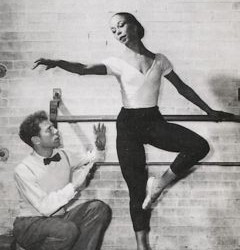
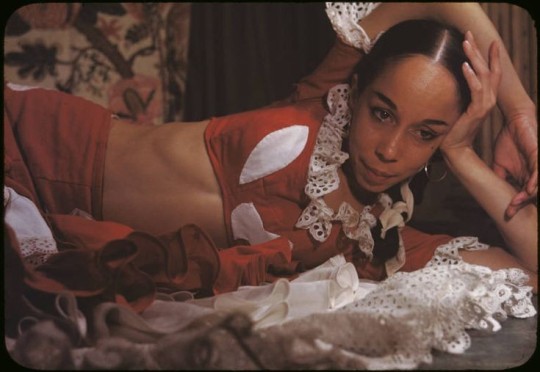


The history of ballet began around the 1500s in Italy. The term "ballet" stems from the Italian word "Ballare," meaning to dance. When ballet was introduced to America in the early twentieth century, it was a new form of art. Unfortunately, African Americans couldn't be part of ballet culture for many years, saying that our bodies were wrong for ballet.
Until one woman broke one of the last major color barriers in classical ballet,
This is her story.
Janet Faye Collins became the first African American prima ballerina and one of the very few prominent black women in American classical ballet. And the first black prima ballerina to perform with the Metropolitan Opera Ballet in New York City, New York.
She broke one of the last major color barriers in Classical Ballet.
Janet Collins was born on March 2, 1917, in New Orleans, Louisiana. Her mother was a seamstress, and her father was a tailor. They moved to Los Angeles, California, in 1921, when she was four years old.
She started taking private dancing lessons at a Catholic community center, and ironically, Collin's parents urged her to study painting rather than dance. Because at that time, art seemed to offer more opportunities to gifted African Americans than classical dance.
Collins studied art on a scholarship at Los Angeles City College and later at the Los Angeles Art Center School.
But she continued her dance training and attracted the attention of Adolph Bohm, Carmelita Maracci, and Mia Slavenska. All prominent dance instructors agreed to work with her. She continued her dance training with Carmelita Maracci, who was one of the few dance teachers at the time to accept black students.
At the age of 15, Janet prepared to audition for Leonide Massine and the De Basil Ballet Russe Company. The company was performing in Los Angeles during its American tour and advertised for an aspiring young dancer to audition for the company.
When it was Janet's turn, she was one of the best to audition. She moved with such beauty and grace that all the other ballerinas applauded her.
Massine saw her talent and accepted her into the company. But only under one condition...
He told her she would have to paint her face white for performances.
Going further into my notes, she was told that she would either need "special roles" created for her or dance with a white face to disguise the fact that she was black.
Collins left the audition in tears and vowed to perfect her art so that race would not be an issue.
In an exchange quoted in U.S. News & World Report, she responded, "I thought talent mattered, not color."
Collins found a cold reception in professional ballet, despite her training. However, she didn't let that set her back, and she continued to perform.
In the 1930s, when she was still in her teenage years, she performed as an adagio dancer in vaudeville productions.
In 1940, she became the principal dancer for the Los Angeles musical productions of "Run Little Chillun" and "The Mikado in Swing". At this time, she worked with the Katherine Dunham Dance Company.
In 1943, she performed in the musical film "Stormy Weather," and in 1946, she appeared in the film, "Thrill of Brazil."
In 1949, Collins made her New York debut after performing her own choreography on a shared program at the 92nd Street NY. In the same year, and after two more performances, Dance Magazine named her "The most outstanding debutante of the season."
Collins made her debut as a prima ballerina on November 3rd, 1948, at the Las Palmas Theater in Los Angeles, and critics praised her as a one-of-a-kind performer.
Zachary Solov, the Metropolitan Opera House's ballet master, noticed her in a Broadway production of Cole Porter's "Out of this World" in 1951. Solov then invited Collins to join the Metropolitan Company when she was 34.
November 13th, 1951: Collins broke a color barrier after her performance of ‘Aida'. She was the first African American prima ballerina with the Metropolitan Opera after a year of joining the Corps de Ballet. It marked the first time a black artist had joined the permanent company.
Unfortunately, Collins faced racism on the road as the company toured southern cities, despite her success in New York.
She was kept off stage due to Race laws, and sometimes her parts were performed by understudies who were white.
She remained at the Met until 1954. She would then go on to tour across the United States and Canada. She then began teaching ballet, which included using dance in the rehabilitation of the handicapped.
She also taught at the School of American Ballet, the San Francisco Ballet School, and the Harkness House.
Janet retired from performing and teaching in 1974. She spent the last years of her life painting religious subjects in her studio in Seattle.
Janet Collins died on May 28th, 2003, in Fort Worth, Texas, at 86 years old.
Despite all that was thrown at her, Janet Collins made a legacy for herself by becoming the first African-American Prima ballerina with the Metropolitan Opera and breaking its color line.
__
Previous
The 16th Street Baptist Church Bombing
Next
Juneteenth
___
My Resources
#the unofficial black history book#black history#black culture#black female writers#writing#indie writer#starving writer#black women#black activism#black writblr#black love#black ballerina#black icons#herstory#history#black history matters#black excellence#women of black history#janet collins#discrimination#black arts#preforming arts#writers on tumblr#women in history#black tumblr
15 notes
·
View notes
Text
Having the opportunity to explore this year’s Met Costume Exhibit ‘Women Dressing Women’ gave me the chance to learn just how big of a role that women had in helping shape the fashion industry into what it is today. Presented in what I would call a four act play, act I titled ‘Anonymity’ begins with the entrance of women in the fashion world. Dressmaking was first seen as an extension of domestic work in the 16th century done by women, but as the growing vocation made its way to the United States women would begin embroidering their work as to have it be rightfully credited to them, but also helping fashion historians keep track of who designed what.
Act II is what I could only cheekily refer to as “old maiden clothes.” Or the birthplace of female autonomy in creating pieces such as lingerie and evening gowns. As I was walking through this part of the exhibit I couldn’t help but chuckle at the idea of some of these pieces being considered lingerie. For example, when staring at Marie Gerber’s ‘Evening Ensemble’ I kept thinking how conservative it is when I compare it to big lingerie brands such as Victoria’s Secret and Savage Fenty. Having grown up on those brands it’s not that strange to see why I would think Gerber was being a bit too modest with her design. Another of my favorite look from this act included Jeanne Lanvin’s ‘Cyclone’ evening gown who would create her own boutique with no financial backing.
Act III titled ‘Agency’ and could be compared to the third wave of feminism, saw a more revealing woman break into the scene. With the rise of the British Punk scene and popular rock bands like The Rolling Stones, Sex Pistols and Black Sabbath, it inspired British designers like Betsey Johnson and Vivienne Westwood to help create a new, edgy look that could match this subversive culture. Fashion was no longer just for the elite, it became an important symbol in cultural revolution and rebellion. Something that women designers could understand and relate to as they continued to push into the mainstream and make their collections not just works of art but a loud disruption to a corrupt and stiff society. Some of my favorite looks from this act include Betsey Johnson’s ‘Paraphernalia’ that I consider paying homage to the rise of hippie culture and the Beatles smash hit ‘Yellow Submarine.’ It was made most famous by model Baby Jane Holzer. Vivienne Westwood’s ‘On Liberty’ recognizes the British High Class and fun fact Vivienne Westwood’s second husband Malcolm McLaren was the manager of the Sex Pistols and Vivienne would often times design their wardrobes growing popularity for both her and the band. I would also be remiss if I didn’t mention the work of Ann Lowe, an African American designer who would go on to make, and then remake the day before due to a flood in her basement, Jackie Kennedy’s wedding dress which she would receive no credit for.
Act IV titled ‘Absence/Omission’ would introduce the “modern woman” created to feature and examine the inclusion of women with different body types as well as showcasing designs made for women who live with disabilities such as Aaron Philips who would have a mannequin modeled after her wearing peices designed by Collina Strada. Aaron Philips is most notable for her debut in the Moschino Fall ‘22 show. This act will also feature pieces from Danish designer Jasmin Søe who creates ensembles for those who live with achondroplasia(little person syndrome) as well as Ester Manas who is known for championing plus size women with her creations.
Though my favorite pieces would in this exhibit would come from Marie Grazia Chiuri ensemble for Dior. Marie captures everything I love about Dior, the combining of high luxury activities with haute couture to match in this fencing inspired ensemble. Tory Burch’s 2024 resort white dress is simplistic in nature but reminds me of something out of the classical Swan Lake ballet show(or if you’re a bit edgy the 2010 cult film ‘Black Swan’). Along with Simone Rocha’s couture dress that I can absolutely give no notes on, these would be my favorite pieces that I found myself coming back to often. Donna Karen’s ‘93 evening dress is honorably mentioned too due to Hillary Clinton wearing it (very distastefully in my opinion) at the 1993 State Dinner. However the gown itself was beautiful and reminded me of a longer version of Maddie Perez’s New Years dress in season 2 of ‘Euphoria.’
Overall these collection was both inspiring to see. I have only had the opportunity to visit the Met costume exhibit twice. The previous time focusing on works of Karl Lagerfeld. This exhibit however taught me more about women’s role in fashion and their struggle to breakthrough than any fashion course I could potentially take. The importance of preserving this history is obvious. Without the knowledge of Ann Lowe, Jackie Kennedy’s famous wedding dress would have continued to go uncredited and a Black woman would have been forgotten to history. These are the types of exhibits that matter. In preserving and showcasing our history, we are able to teach and inspire a new generation of fashion critics, designers and models to see what is possible in this amazing industry and if you find yourself in New York I would highly recommend making time to check out the exhibit.
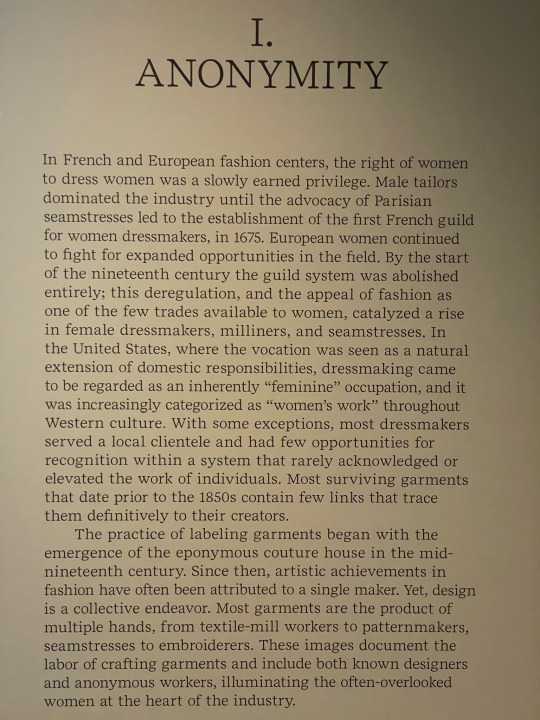
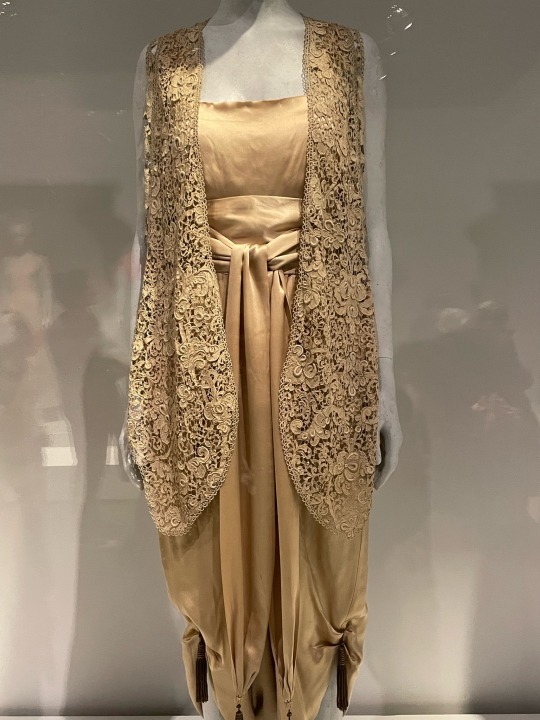
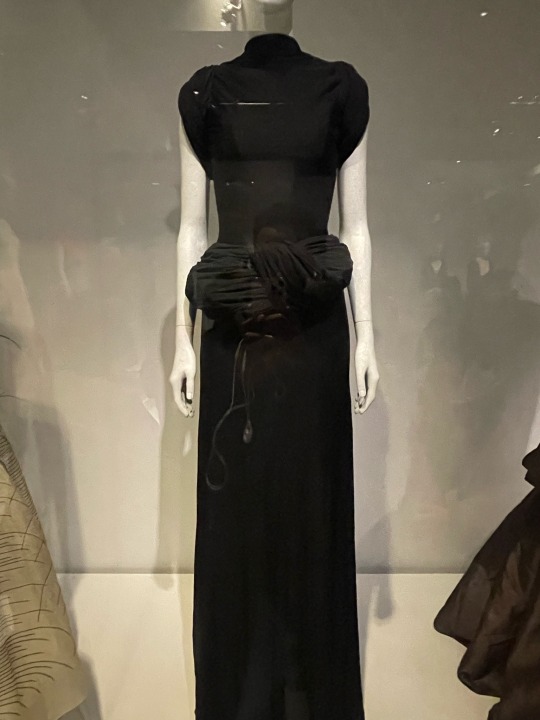
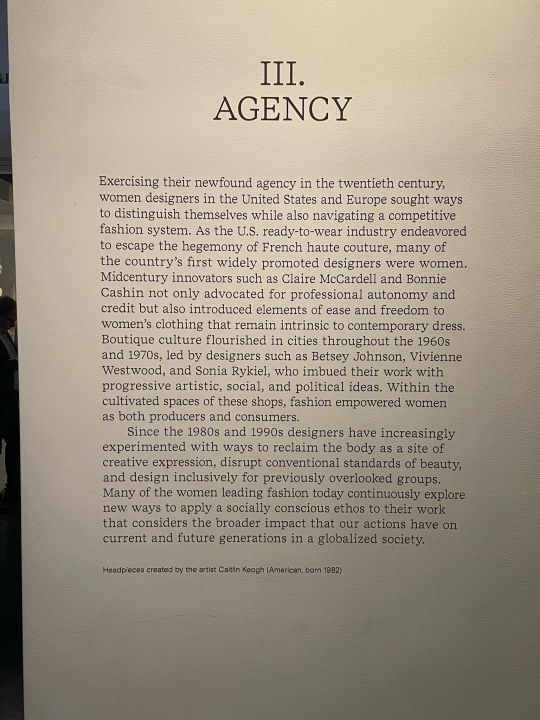
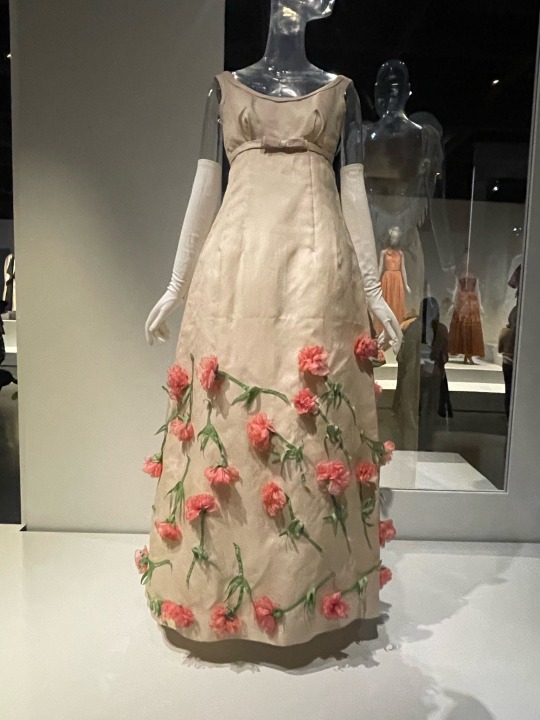
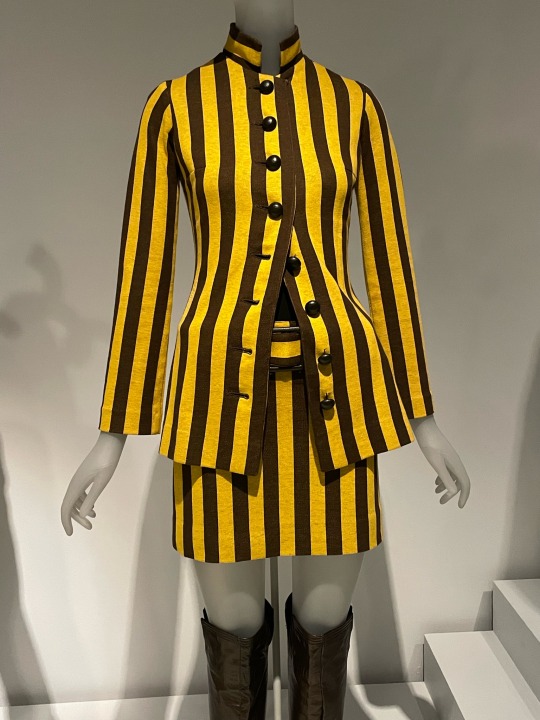
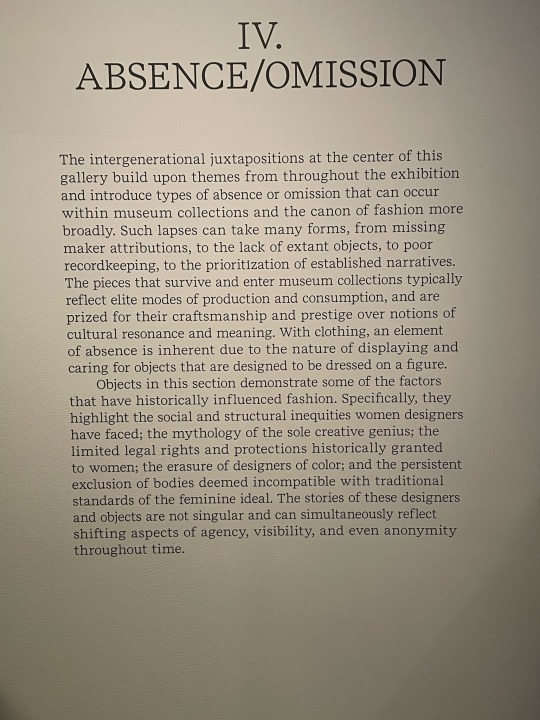
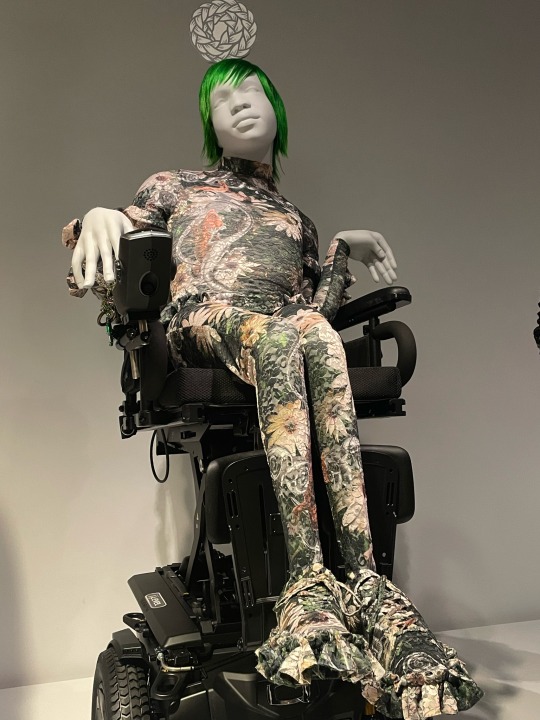
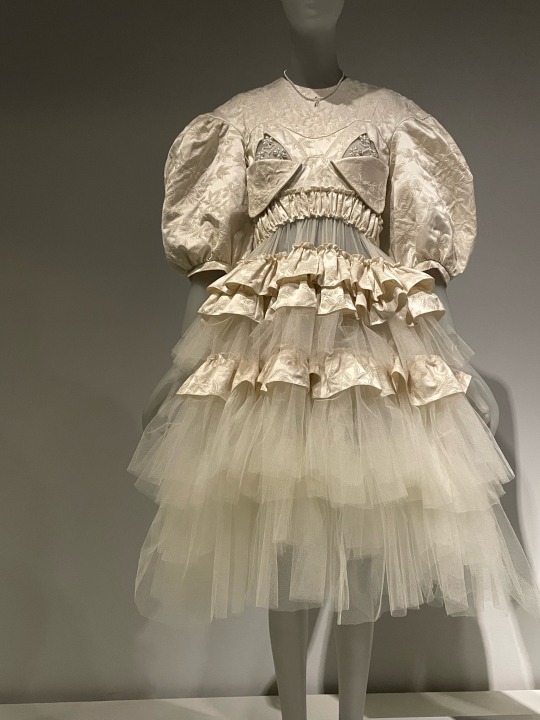
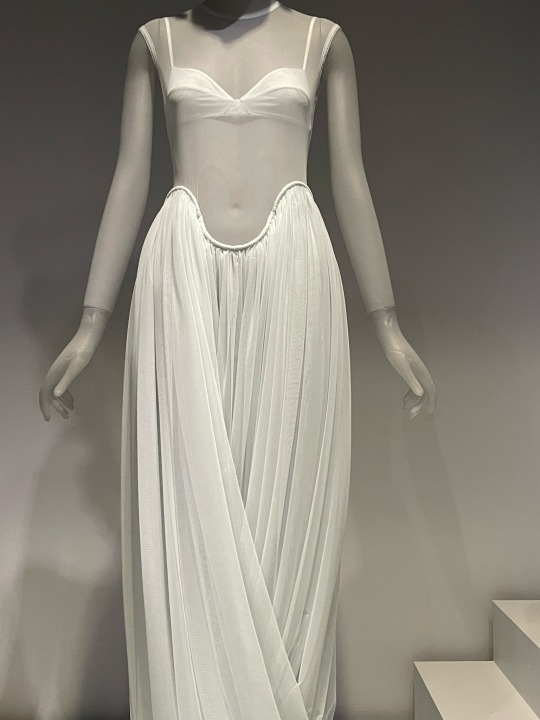
#dior#fashion#new york#vivienne westwood#betsey johnson#tory burch#simone rocha#met museum#fashion history#black history
3 notes
·
View notes
Note
Since I very carefully planned my Ateez fit - I heard that it‘s not really a thing to dress up for concerts in Korea and was curious if you know more about that.
Here in Europe and in the U.S., too, so many people have INSANE outfits and I personally think it‘s so much fun to create an outfit for a concert, like the whole preparation in general. It makes me even more excited than I already am.
Will you wear something funky for ateez?
Have a lovely day/evening/night whatever, I have no clue about time shifts hahaha ✨
What is your Ateez outfit?? I'm so intrigued!!! I have only seen this from afar, obviously, but whenever I see social media posts of people in the West dressing up to go to concerts I feel a little bit envious and a lot admiring. Was it Beyonce's people who all dressed in silver for one of her tours?? I thought that was so fantastic. Everyone looked AMAZING and it's a way to feel connected to other fans, have some healthy competition of the creative variety among fans, and a terrific way to just have a better time. I also remember seeing new coverage of African Americans dressing up in the most fabulous outfits to go to see Black Panther, and being astonished at what they came up with to wear - such panache and creativity!
I'm very much all for "making an event" of things. I go to NYC often and I always go to at least one opera and one ballet at Lincoln center. I ADORE the people who get the prime orchestra seats and wear long silk gowns or beaded suits or get super strict and wear My Personal Shopper At Chanel Set This Aside For Me types of get ups.
I haven't ever been to a Kpop concert, so I don't know about the dressing up. This is why I'm glad I got two nights in a row, because I will scope out what it's like day 1, and maybe see what I wanna do differently on day 2. For classical music and ballet performances, Korean women do dress up. The style is what I would call Sunday Best, maybe, in the West? Definitely not casual nor business-attire, so more like what you would wear to a wedding at a fancy venue: heels, long skirts/ tailored dresses/ your 'best suit' in a good cut or fabric, with (because this is South Korea) your most expensive luxury handbag. Concerts are also a place where I've seen a lot of women wear their biggest, bling-est jewelry. We buy these things, but can't wear them all the time (because of the suffocating rules of demure, which I hate but must abide) so concerts and ballet galas are when they all come out. But I feel like this is not the right thing to wear to a Kpop concert LOL. I'll keep you posted. (Also, I'm not sure I actually have funky clothes to begin with;;;)
2 notes
·
View notes
Text

Alvin Ailey Jr. (January 5, 1931 – December 1, 1989) was an African American dancer, director, choreographer, and activist who founded the Alvin Ailey American Dance Theater, one of the most successful dance companies in the world. He created AAADT and its affiliated Ailey School as havens for nurturing African American artists and expressing the universality of the African American experience through dance.
Born in Rogers, Texas to Alvin Ailey and Lula Elizabeth.
His work fused theatre, modern dance, ballet, and jazz with Black vernacular, creating hope-fueled choreography that continues to spread global awareness of African American life in America. His choreographic masterpiece Revelations is recognized as one of the most popular and most performed ballets in the world. On July 15, 2008, Congress passed a resolution designating AAADT as a “vital American Cultural Ambassador to the World.” In recognition of AAADT’s 50th anniversary, then-Mayor Michael Bloomberg declared December 4 “Alvin Ailey Day” in NYC while then-Governor David Paterson honored the organization on behalf of NY State.
He founded the AAADT to present his vision of honoring African American culture through dance. The company had its debut at 92nd Street Y. The performance included his first masterpiece, Blues Suite, which followed men and women as they caroused and cavorted throughout an evening while blues music played in the background until church bells began to ring, signaling a return to mundane life. He premiered his most popular and critically acclaimed work, Revelations, again at the 92nd Street Y. In creating Revelations he drew upon his “blood memories” of growing up in Texas surrounded by African Americans, the church, spirituals, and the blues. The ballet charts the full range of feelings from the majestic “I Been ’Buked” to the rapturous “Wade in the Water”, closing with the electrifying finale, “Rocka My Soul in the Bosom of Abraham.” #africanhistory365 #africanexcellence
0 notes
Text
Things to Do in the DMV in February!

Love and patriotism are alive and well in the DMV this February, with events and festivities that warm the heart and feed the soul.
Feb. 1 – 26
George Washington Birthday Celebration
Alexandria, VA
As the adopted hometown of George Washington, the City of Alexandria celebrates his birthday every year throughout the month of February with events like the Cherry Challenge Restaurant Contest where each participating restaurant creates its own cherry cocktail, appetizer, entree and/or dessert. Washington-themed tours, ceremonies, balls, and galas educate and entertain guests. The George Washington Birthday Parade marches a mile-long route through the streets of Alexandria on Monday, February 20 beginning at 1 p.m.
Feb. 1 – 11
Harry Potter: A Forbidden Forest Experience
Morven Park 41580 Sunday Morning Lane Leesburg, VA
Set in the beautiful woodland on the Morven Park grounds, this nighttime woodland trail experience is filled with wizarding wonders – all brought to life by award-winning theatrical designers. This 60-90 minute interactive walk through the woods allows guests of all ages to cast spells, meet magical creatures, and enjoy a selection of Harry Potter-inspired food and drinks.
Feb. 1 (ongoing exhibit)
Powerful Partnerships: Civil War-Era Couples
National Portrait Gallery 8th and G Streets, NW Washington, DC
This exhibit features five dynamic duos who made their mark on U.S. history during tumultuous times. Also on display and similarly themed, is “Family Ties: Daguerreotype Portraits,” which reflects familial relations documented by early cameras.
Feb. 3 – 5
Chocolate Lovers Festival
City of Fairfax, VA Check the event schedule for exact locations.
Search for the GOLDEN TICKET in historic downtown Fairfax City during the Chocolate Lovers Festival! Three of the limited-edition chocolate bars that are scattered throughout the city will include golden tickets for chocolate lovers gift baskets. But everyone who attends the festival will be a winner as they will be surrounded by the finest chocolate confections in the region: cakes, candies, brownies, fudge — so much sweetness!
Feb. 3 – 5
Spring Home Show
Fredericksburg Expo and Conference Center 2371 Carl D. Silver Parkway Fredericksburg, VA
Get inspired for your upcoming landscaping projects, home improvements, updated decor, and more.
Feb. 4
Black Homesteaders of the South
National Museum of African American History & Culture Concourse, Oprah Winfrey Theater (and online streaming) 1400 Constitution Ave. NW Washington, DC
Genealogist Bernice A. Bennett tells the stories of African American families who became landowners through the Homestead Act of 1862. She explores how these families navigated the process and what this legacy means for their descendents. Make sure to catch the NMAAHC’s many February exhibitions including “Spirit in the Dark,” the story of religion in Black America, and “A Changing America: 1968 and Beyond,” which explores contemporary Black life.
Feb. 4
Fire in Ice
Downtown Frederick, MD
Experience a winter wonderland in Downtown Frederick. The city will be transformed by hundreds of unique ice sculptures.
Feb. 10
I Dream a World Selections from Brian Lander’s Portraits of Remarkable Black Women: Part II
National Portrait Gallery 8th and G Streets, NW Washington, DC
Pulitzer-Prize winning photographer Brian Lanker’s subjects include women who have made significant contributions to the arts, activism, literature, politics, sports, and more. This installation includes Althea Gibson, Odetta, Cicely Tyson, and Oprah Winfrey.
Feb. 15 – 19
Romeo and Juliet
American Ballet Theatre John F. Kennedy Center for the Performing Arts 2700 F St. NW Washington, DC
Enjoy the beauty of Renaissance Italy as you experience the most iconic story of star-crossed lovers. The American Ballet Theatre’s and The Kennedy Center Opera House Orchestra present this lavish production through Sergei Prokofiev’s music, Kenneth MacMillan’s choreography and Nicholas Georgiadis’ colossal sets and lavish costumes.
Feb. 17 – 19
Mid-Atlantic Jazz Festival
Hilton Hotel and Executive Meeting Center 1750 Rockville Pike Rockville, MD
Enjoy three days of jazz on four different stages including concerts, master classes, interviews with artists, dancing, and jam sessions.
Feb. 24 – 25
Virginia Black History Month Association Events
Hilton Alexandria Mark Center 5000 Seminary Road Alexandria, VA
Attend the free Black Health Fair and Relationship Seminar on Friday, Feb. 24 at 4 p.m. The Black Health Fair includes dozens of health organizations who will provide lifesaving information, perform on-the-spot prescreening, and/or set up health appointments. The Relationship Seminar features professional relationship experts to empower guests with information on how to keep their relationships healthy and positive.
The keynote speaker for the 2023 Virginia Black History Month Gala is veteran actor, singer, and producer Leon Robinson who played the lead role in the 2000 film “Little Richard.”
#jamierichards#realtorjamier#realestate#realestateagent#realestatetips#february#things to do#things to do in february#things to do in the dmv#dmv
0 notes
Photo

Today In History Janet Collins broke color barriers in the 1950s when she became the first African American prima ballerina and one of the very few prominent black women in American classical ballet. Collins was born in New Orleans, LA, on this date March 7, 1917, and today we are honored to share a glimpse into the life of a crucial figure in ballet history. Ms. Collins made her debut as the leading dancer in the Met’s production of “Aïda.” She went on to become the first African American prima ballerina with the Metropolitan Opera. Ms. Collins was also a member of SAB’s guest faculty, teaching modern dance classes at the School from 1949-1950 and then again from 1967-1969. “Everything was clear. But the speed with which Janet Collins moved was unbelievable,” said Arthur Mitchell an American dancer, choreographer, and director who was the first African American to become a principal dancer with a major ballet troupe, New York City Ballet. He later cofounded the Dance Theatre of Harlem. “There was a wonderful feeling of flight all the time, but not flight to get away, flight to move. And she really reveled in the movement, she reveled in the movement. And as Balanchine said, ‘a dance is movement through time and space.’ She was the embodiment of that when she danced.” CARTER™️ Magazine carter-mag.com #wherehistoryandhiphopmeet #historyandhiphop365 #cartermagazine #carter #janetcollins #womenshistorymonth #blackhistorymonth #blackhistory #history #staywoke #ballet https://www.instagram.com/p/CpfDH8_uRaO/?igshid=NGJjMDIxMWI=
#wherehistoryandhiphopmeet#historyandhiphop365#cartermagazine#carter#janetcollins#womenshistorymonth#blackhistorymonth#blackhistory#history#staywoke#ballet
56 notes
·
View notes
Text
On this day in Wikipedia: Thursday, 14th September
Welcome, Välkommen, Dzień dobry, नमस्ते 🤗 What does @Wikipedia say about 14th September through the years 🏛️📜🗓️?

14th September 2022 🗓️ : Event - Death and state funeral of Elizabeth II Death of Queen Elizabeth II: The Queen's coffin is taken from Buckingham Palace, placed on a gun carriage of The King's Troop Royal Horse Artillery and moved in a procession to Westminster Hall for her lying in state over the next four days with the queue of mourners stretching for miles along the River Thames. "Elizabeth II, queen of the United Kingdom and the other Commonwealth realms, died on 8 September 2022 at Balmoral Castle in Scotland, at the age of 96. Elizabeth's reign of over 70 years was the longest of any British monarch. She was succeeded by her eldest son, Charles. Elizabeth's coffin lay at..."
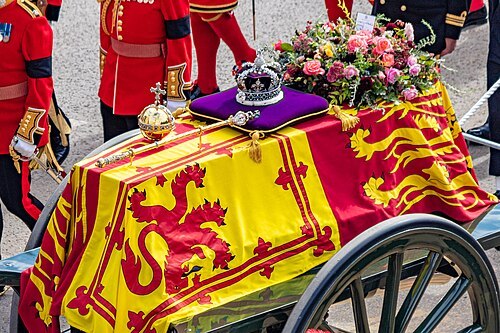
Image licensed under CC0? by Department for Digital, Culture, Media and Sport
14th September 2018 🗓️ : Death - Ethel Johnson (wrestler) Ethel Johnson, American professional wrestler (b. 1935) "Ethel Blanche Hairston (née Wingo; May 14, 1935 – September 14, 2018) was an American professional wrestler whose ring name was Ethel Johnson. She debuted at age 16, becoming the first African-American women's champion. She was a fan favorite, billed as "the biggest attraction to hit girl wrestling..."
14th September 2013 🗓️ : Death - Maksym Bilyi (footballer, born 1989) Maksym Bilyi, Ukrainian footballer (b. 1989) "Maksym Ivanovych Bilyi (Ukrainian: Максим Іванович Білий; 27 April 1989 – 14 September 2013) was a Ukrainian football midfielder...."

Image licensed under CC BY-SA 3.0? by Виктория Сидорова
14th September 1973 🗓️ : Birth - Mike Ward (comedian) Mike Ward, Canadian comedian and actor "Michael John Ward (born September 14, 1973) is a Canadian comedian. He performs comedy in both French and English...."
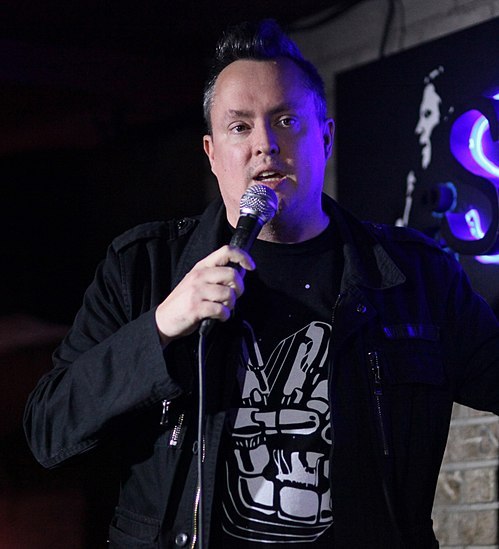
Image licensed under CC BY-SA 2.0? by Lisa Gansky from New York, NY, USA
14th September 1923 🗓️ : Birth - Nicholas Georgiadis Nicholas Georgiadis, Greek painter and costume designer (d. 2001) "Nicholas Georgiadis CBE (Greek: Νίκος Γεωργιάδης; 14 September 1923 – 10 March 2001) was a Greek painter, stage and costume designer, best known for his work in ballet, particularly in collaboration with Sir Kenneth MacMillan...."
14th September 1821 🗓️ : Death - Heinrich Kuhl Heinrich Kuhl, German naturalist and zoologist (b. 1797) "Heinrich Kuhl (17 September 1797 – 14 September 1821) was a German naturalist and zoologist. Kuhl was born in Hanau (Hesse, Germany). Between 1817 and 1820, he was the assistant of professor Th. van Swinderen, docent natural history at the University of Groningen in Groningen (the Netherlands). In..."

Image by Friedrich Fleischmann (1791—1834), German painter and engraver
14th September 🗓️ : Holiday - Engineer's Day (Romania) "Engineer's Day is observed in several countries on various dates of the year...."
0 notes